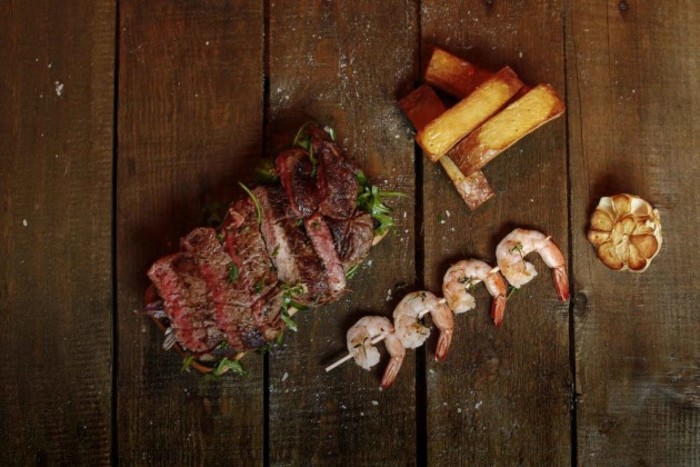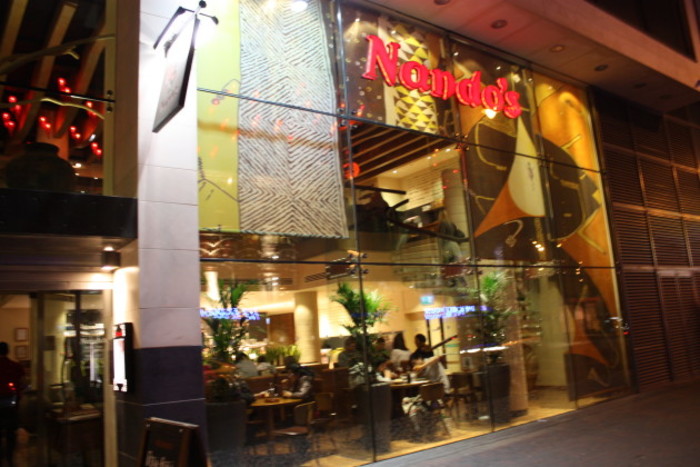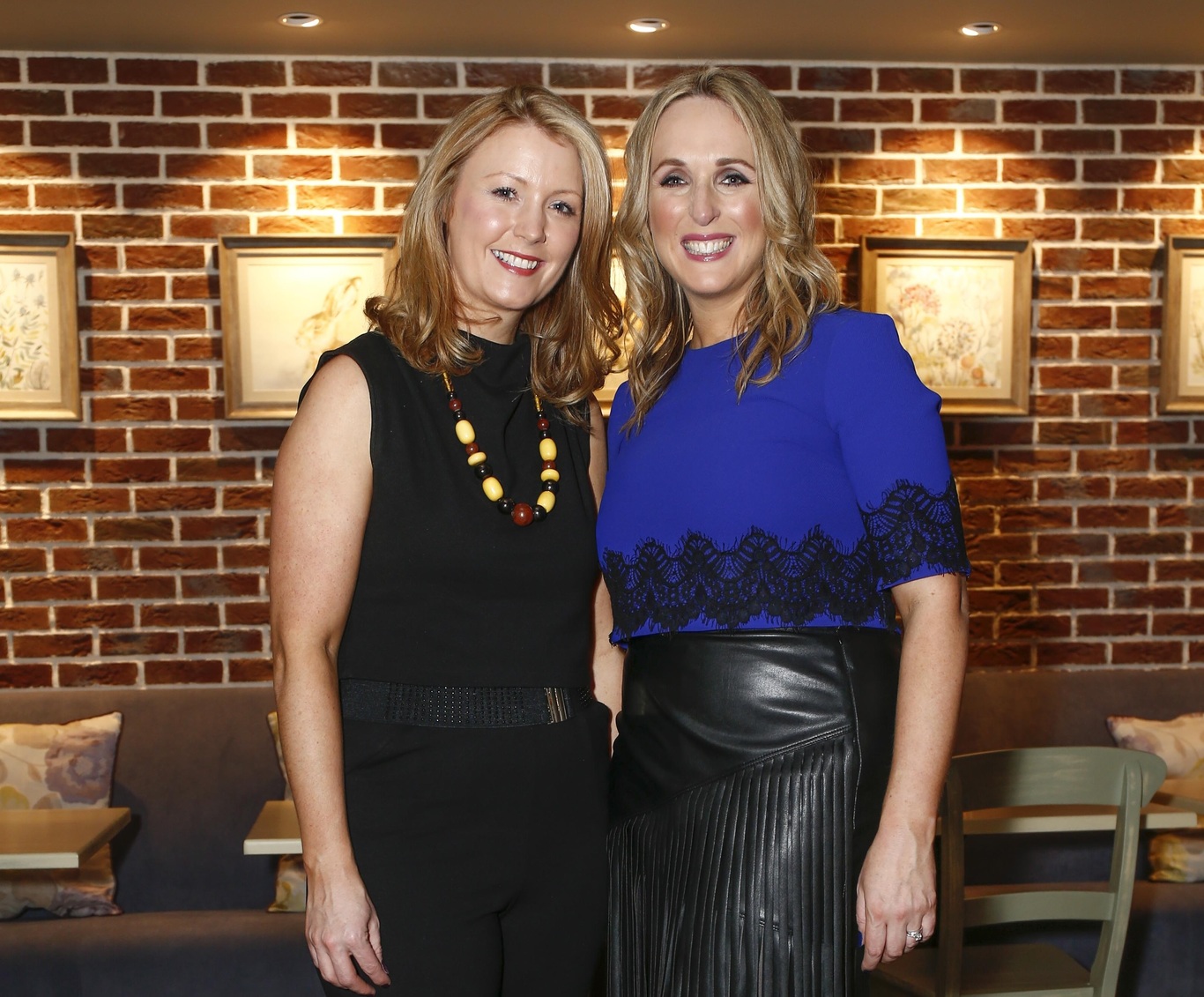'People walked into meetings with two 28-year-old girls and just laughed'
As part of our weekly How My Business Works series, we profile Gourmet Food Parlour.
WHEN THEY FIRST decided to launch their restaurant business, Lorraine Heskin and her friend Lorraine Byrne found that many work appointments came with a side order of condescension.
“We found it difficult to get anyone to meet us, people walked into meetings with two 28-year-old girls and just laughed,” Heskin tells Fora.
To be fair, and by her own admission, Heskin, now the head of restaurant chain Gourmet Food Parlour, was unprepared. “We had no proper background in business, we didn’t even know that you needed to put in your own money; we didn’t have a clue,” she says.
The pair initially found little success when trying to secure funding for their first restaurant. Despite her youth at the time, Heskin felt that it was her last chance to strike out on her own.
The Galway native had already spent years abroad by the time she was 28, mostly in the US. After finishing a masters in business at the University of Limerick in 1999, she worked in a sales job with software giant IBM for two and a half years before completely uprooting and moving to New York.
She landed a position with Irish Food Distributors and was responsible for all of the company’s clients on the island of Manhattan.
“It was tough, I was out on the streets pounding the blocks and meeting people,” she says. “The US gave me a different outlook, I learned a lot about work ethic, how to apply yourself to a job and stick to it.”
Despite enjoying the US, Heskin eventually decided to return – “I missed my family and friends, I’m a home bird” – and after a two-year stint with Jacob’s Biscuits decided a move was in order after the company started cutting back its focus on exports.
“When I left I knew that I had always wanted to do my own thing, it was always niggling at me saying ‘give it a go’. I wasn’t married, I had no kids, it was the best time to try. If I hadn’t, I never would have,” she says.
However the two college friends found it difficult to attract any funding to get a business off the ground, with Heskin saying that investors didn’t take her seriously. After cobbling together some money from a mix of friends, family, and some slightly skeptical bankers, Heskin and Byrne managed to open a small, 25 seat-restaurant with a handful of staff.
Now 39 and married with three young children, Heskin, and her business partner, continued to expand the company and today their firm employs 135 people across six locations.
What do you do and how long have you done it for?
Gourmet Food Parlour has three of its own restaurants, runs the kitchen in three more, and offers a catering service on the side. The company looks to provide decent, locally sourced food at reasonable prices.
The business was officially established in 2006 with the opening of its first branch in Dún Laoghaire, a small venue that could only hold about two dozen people. Business was tough during the first year or so and the company began to feel the pinch even harder when the recession hit in 2008.
Despite this, Heskin decided to expand, opening the company’s second outlet in Swords just as the economy nosedived.
“We had queues coming out the door at first, but then all of a sudden it stopped. In the first year we struggled a lot with cashflow and paying wages, but we knew that there was a demand for the business which is why we looked at other locations like Swords,” she says.
 Gourmet Food Parlour co-owner Lorraine Heskin
Gourmet Food Parlour co-owner Lorraine Heskin
“Then that summer everything flopped. We didn’t want to let staff go so we didn’t.”
Instead the company focused on tightening its costs and on getting better value out of anything possible as the recession took hold.
“We looked at things like who we were buying food from and renegotiated for a bit more of a margin, it really stood to us,” she says.
“We also started doing a tapas night that locals really took to and we worked longer hours and harder. That helped us to get through the leaner times.”
After weathering the storm, the company slowly looked again at opening new outlets and moving into catering.
What are your costs and how do you make money?
The company is divided into two main sections, its restaurant business and its catering arm. Its restaurants make most of the money. While Heskin won’t provide exact figures, turnover is likely to be several million euro, with about 80% of this coming from its three main restaurants and the three other kitchens that it operates.
The three main restaurants each fit about 100 people, considerably more than the original 25-seater in Dún Laoghaire, with the group’s Swords outlet due for an upgrade by the end of the summer.
The remaining fifth of the company’s revenue is sourced from catering, which the company moved into in 2010. “We were feeding some of the Dublin GAA football teams on a small level and we won the contract to feed the whole squad when it went out to tender,” Heskin says.
“We also feed the Leinster Rugby team and work with nutritionists to come up with diets.” She added that the firm also works with several corporations and has provided catering for tech giants such as Google and LinkedIn.
 Gourmet Food Parlour has partnered with Dublin GAA
Gourmet Food Parlour has partnered with Dublin GAA
Most restaurants are low margin and Gourmet Food Parlour is no exception. In the industry an operating margin – that is, how much money is left over after basic costs such as wages and rent are paid – of about 5% would be considered pretty decent.
The company is a bit off this yet. The group lost money in its first few years and struggled to break even during the recession, although both are hardly unusual in the restaurant trade.
It built up losses of just under €140,000 by the end of 2009, however that sum was gradually reduced over the years. By the end of 2014, the company reported a full-year profit of about €70,000 and moved into the black for the first time with a surplus of €23,700.
Similarly to other restaurants, staff and the raw materials for food and drink make up the bulk of costs, accounting for about two-thirds of the company’s spend between them, while much of the rest of the cash goes on bills such as rent and electricity.
Opening up new locations also takes a fair chunk of change. Heskin says each extra outlet costs “several hundred thousand” to open, while keeping existing restaurants up to snuff also requires constant investment.
What is your market?
The Gourmet Food Parlour is a pure Dublin company. There is an even split across the River Liffey, with three of its locations on either side of the city. Heskin says that she is weighing up another site and indicates that the capital is the most likely choice again.
“We love Dublin and it is the market that we are the most familiar with,” she says. “We have always had lots of opportunities, but we still think that there is more potential.”
“We are very focused on buckling down on our existing units, but we would never shy away from expansion, next year maybe or the year after. I would love to open up in Castleknock, I think it is a great area and could do with an injection of something.”
The group’s offering is pitched mainly at the mid-range market. Most restaurants have a breakfast, lunch and dinner offering. Main courses for dinner cost around the €15-€18 mark, while starters and sides tend to average out at around a fiver.
 Some of the food on offer at the Gourmet Food Parlour
Some of the food on offer at the Gourmet Food Parlour
Heskin says customers tend to be a mix of “anyone and everyone”.
“We do breakfast lunch and dinner, we are big on the 20-35s, but at night there seems to be a bit of everyone,” she says.
“We would have couples on dates, young people before they go out, we’re even quite family orientated – especially in Malahide, where we have beanbags for kids.”
What is the competition?
There are hundreds of restaurants littered across the Dublin city and county areas, and almost all are potential competition to the Gourmet Food Parlour.
“In somewhere like 37 Dawson Street, where we run the kitchen, we are probably competing with everyone on that street,” she says.
“Eating out is such a huge trend and not everyone’s weekend is Saturday and Sunday; there is a seven-day opening window so you’re competing all the time.”
Casual dining has become much more of a trend in recent years with chains such as Nando’s and Milano springing up across Dublin. However, Heskin says that the company tends to find itself up against local restaurants operating in a single location rather than larger restaurant groups.

What is your vision for the company?
Heskin seems to be keeping her goals fairly modest. When asked how big she would like the company to be in five years she says, “I would love it if the business was as busy as it is right now”, but with the caveat that more growth is really what’s on the menu.
“We are continuing to grow and absorb more growth and I really want to open somewhere else. I would love the catering and events business to keep growing and maybe become three or four times as big as it is now.”
Personally, Heskin says she is content that she has found her vocation.
“After 10 years I love the business more than when I started, I’m excited to go in every day and see what we’re doing,” she says. “I would hope to stay with it unless someone comes in and gives us a very good offer, but that isn’t what it’s all about.
“I have thought about selling, but there would be an emotional connection with the company. Lorraine and I both have young families and they may want to take over one day. I’m happy where I am now.”
This article is part of our weekly series examining the nuts and bolts of businesses. If you would like to see your company featured please email news@fora.ie.






